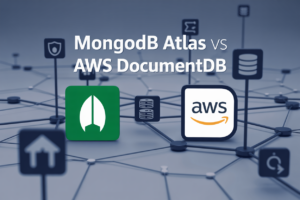Ever had a system crash during peak traffic and you’re scrambling to explain why your capacity planning missed the mark? You’re not alone. Most engineers I’ve worked with can build amazing systems but freeze when asked “will this handle Black Friday traffic?”
Back-of-the-envelope estimation isn’t just some theoretical exercise—it’s your first line of defense against embarrassing outages and 3AM emergency calls. It’s the difference between confidently saying “we’ve got this” and frantically adding servers while your CEO watches the site crash.
I’ve spent 15 years designing systems at scale, and I’ve learned that quick, accurate capacity estimates are often more valuable than elegant code. The best engineers I know can do these calculations in their sleep.
But here’s the thing most tutorials miss: there’s an art to knowing which variables actually matter and which ones you can safely ignore.
Understanding Back-of-the-Envelope Calculations
Understanding Back-of-the-Envelope Calculations
A. Why Quick Estimations Matter in System Design
Ever tried to build a skyscraper without knowing how much concrete you need? That’s what designing systems without quick estimations feels like. Back-of-the-envelope calculations give you immediate insights into feasibility, helping catch potential disasters before they happen. They’re your first line of defense against unrealistic expectations.
B. The Balance Between Precision and Speed
Perfect is the enemy of good in system design estimation. The magic happens when you strike that balance between accuracy and speed. You don’t need decimal-point precision – you need ballpark figures fast enough to make decisions. Good engineers know when 80% accuracy in 10 minutes beats 99% accuracy in 10 hours.
C. Real-World Applications from Tech Giants
Google’s Jeff Dean is famous for his estimation skills. When faced with scaling challenges, he quickly calculates throughput needs on the fly. Facebook engineers regularly estimate user impact before implementing features. Amazon’s two-pizza teams rely on quick capacity estimations to ensure their services can handle Black Friday traffic spikes without breaking a sweat.
D. Common Pitfalls to Avoid
Don’t fall into these traps: ignoring orders of magnitude (a million vs. a billion is a HUGE difference), forgetting about bottlenecks (that one slow database query can tank everything), or missing crucial constraints (like network latency). The biggest mistake? Not accounting for growth – today’s perfect solution becomes tomorrow’s nightmare if you forget the scaling factor.
Essential Numbers Every System Designer Should Memorize
Essential Numbers Every System Designer Should Memorize
A. Traffic Metrics That Matter
Quick, when was the last time you estimated traffic for a new feature? Don’t wing it. Memorize these baseline numbers: daily active users typically convert to 10% of monthly users, peak traffic hits 2-3x average, and most consumer apps see 10-100 requests per user per day. With these figures in your back pocket, you’ll never be caught flat-footed in design meetings again.
B. Latency Numbers at Different System Levels
These numbers will save your life in system design interviews. No exaggeration.
| Operation | Latency |
|---|---|
| L1 cache reference | 0.5 ns |
| Branch mispredict | 5 ns |
| L2 cache reference | 7 ns |
| Mutex lock/unlock | 25 ns |
| Main memory reference | 100 ns |
| Compress 1KB with Snappy | 3,000 ns |
| Send 1KB over 1 Gbps network | 10,000 ns |
| SSD random read | 150,000 ns |
| Read 1MB sequentially from memory | 250,000 ns |
| Round trip within same datacenter | 500,000 ns |
| Disk seek | 10,000,000 ns |
| Read 1MB sequentially from disk | 20,000,000 ns |
| Send packet CA→Netherlands→CA | 150,000,000 ns |
These aren’t just academic numbers. They’re your secret weapon for spotting performance bottlenecks before writing a single line of code.
C. Storage Capacity Benchmarks
Storage calculations trip up even seasoned engineers. Remember these: text is ~1-2 bytes per character, images average 200KB-5MB depending on quality, and videos need 10MB-100MB per minute depending on resolution. Database records? Figure 1KB per row as a starting point. Master these numbers and you’ll estimate storage requirements in seconds, not hours.
D. Memory Consumption Guidelines
Memory benchmarks you can’t afford to forget: a basic web server needs ~500MB-1GB RAM, each concurrent user connection consumes ~1-2MB, and database caching typically requires 20-30% of your dataset size for optimal performance. Cache hit rates drop dramatically below 15% of your working set. Keep these numbers handy when sizing your next deployment.
E. Network Bandwidth Calculations
Network bandwidth calculations don’t have to be complicated. A single 1080p video stream needs ~5-8 Mbps, a typical API request/response pair runs 1-10KB, and most web pages transfer 2-3MB of data. For high-traffic services, remember that 1Gbps handles roughly 100MB/s of actual application data after protocol overhead. These benchmarks make capacity planning straightforward.
Step-by-Step Approach to Capacity Estimation
A. Defining Your Core Requirements
Ever tried fitting a square peg in a round hole? That’s what happens when you skip defining requirements. Start by asking: How many users? What’s the data volume? Peak traffic expectations? Write these down—they’re your North Star for all subsequent calculations. Without clear requirements, you’re just guessing.
B. Breaking Down Complex Problems
Don’t get overwhelmed by the big picture. Slice that monster problem into bite-sized chunks! If you’re designing a photo-sharing app, separate your thinking: uploads per day, storage needs, and retrieval patterns. Breaking problems down reveals hidden bottlenecks and makes impossible-looking calculations suddenly manageable.
C. Applying Appropriate Scaling Factors
Raw numbers rarely tell the whole story. Apply scaling factors to account for growth, redundancy, and safety margins. If you calculate needing 10 servers today, what happens at 2x user growth? Or during holiday traffic spikes? Smart engineers don’t just plan for now—they build in breathing room with realistic multipliers.
D. Documenting Your Assumptions
Your calculations are only as good as your assumptions. Write. Them. Down. Whether it’s “average message size is 1KB” or “peak traffic occurs at 5pm EST,” documenting assumptions makes your estimates defensible and adjustable. When reality inevitably differs, you’ll know exactly which assumptions to revisit.
Practical Estimation Techniques for Different Resources
Practical Estimation Techniques for Different Resources
A. Computing CPU Requirements
Ever tried figuring out how many CPUs you need for a system? Start with operations per second, then factor in CPU utilization (aim for 70% max). Don’t forget to account for request complexity and growth. A simple formula: (requests/second × CPU cycles per request) ÷ (cycles per core × utilization target).
B. Calculating Memory Needs
Memory estimation isn’t rocket science. Calculate per-request memory, multiply by concurrent requests, then add your base OS and application footprint. Add a 20% buffer for unexpected spikes. For a web service handling 1,000 concurrent users at 2MB per user, you’d need at least 2.4GB (with buffer) plus your base memory needs.
C. Estimating Storage Capacity
Storage calculations boil down to simple math. Determine your object size, multiply by object count, then add metadata overhead. For user data, calculate: users × average data size × retention period × compression factor. Always plan for 2-3x your initial estimate to accommodate growth and avoid painful migrations later.
D. Determining Network Bandwidth
Bandwidth needs aren’t mysterious. Calculate: peak users × data per user × frequency. If 10,000 users each download 500KB every minute, you need about 83MB/s or 667Mbps. Don’t forget to consider asymmetric patterns—many systems have significantly different ingress and egress requirements.
E. Projecting Database Capacity
Database sizing requires thinking about both storage and performance. Start with raw data size (rows × row size × number of tables), add indexes (typically 20-50% of data size), then factor in write frequency to estimate IOPS. For read-heavy workloads, consider in-memory caching to reduce database load by 80-90%.
Case Studies in Capacity Planning
Case Studies in Capacity Planning
A. Scaling a Web Application to Millions of Users
Imagine your photo-sharing app suddenly goes viral. You’ll need to estimate: 100M users × 5 photos/day × 2MB/photo = 1PB storage yearly. Your traffic calculations? Peak times might hit 50,000 requests/second. That’s when your back-of-envelope math saves you from a crash-and-burn scenario before it happens.
B. Designing a Video Streaming Service
Netflix-style services demand serious number-crunching. Consider: 10M concurrent users × 3Mbps bitrate = 30Tbps of bandwidth. That’s before factoring in redundancy, caching ratios, and regional distribution. The difference between a smooth launch and a buffering nightmare comes down to these quick calculations.
C. Planning for E-commerce Holiday Traffic Surges
Black Friday can break unprepared systems. A typical e-commerce site might jump from 100 transactions/minute to 10,000+. Your database will need 100× the normal capacity. Caching strategies become critical. Good estimations here directly translate to dollars saved when customers aren’t seeing error pages.
D. Estimating Costs for a Mobile App Backend
Money matters in backend planning. For a social app with 5M daily users, each making 20 API calls/day, you’re looking at 100M daily requests. At $0.20 per million AWS Lambda invocations, that’s $20 daily just for function calls—before storage, bandwidth, and database costs enter the picture.
Building Your Estimation Toolkit
Creating Reusable Calculation Templates
Ever spent hours redoing the same storage estimates for different projects? Been there. Create a simple spreadsheet with common values like QPS-to-server ratios or RAM-per-user calculations. I’ve saved myself countless headaches by templating these calculations. Next time you’re facing a design interview or real-world capacity question, you’ll thank yourself.
Tools and Apps That Accelerate Estimations
Forget doing math in your head during high-pressure situations. Tools like back-of-envelope.com and capacityplanner.io are lifesavers. They’ve got pre-built formulas for everything from database sharding to CDN requirements. I personally swear by ExcaliDraw for quick visual calculations – drag, drop, and your architecture math is done.
Verification Methods to Test Your Calculations
The reality check is crucial. Don’t just trust your first estimate. Cross-reference with production metrics from similar systems. Start with the question “does this even make sense?” A single server handling Instagram’s photo traffic? Probably not. Compare your numbers against public tech blog estimates – they’re often surprisingly accurate sanity checks.
Evolving from Estimates to Production-Ready Systems
Evolving from Estimates to Production-Ready Systems
A. When to Refine Your Initial Calculations
Those quick napkin calculations? They’re just your starting point. Once your system hits real users, everything changes. Traffic spikes during product launches, unexpected user behaviors, and third-party service hiccups will force you to revisit those numbers. The smartest engineers know exactly when to ditch their initial guesses and adapt to reality.
B. Translating Estimates into Infrastructure Decisions
Your estimates aren’t just academic exercises—they directly impact your wallet and user experience. That 100K QPS calculation means choosing between a fleet of mid-tier servers or fewer high-powered machines. The numbers tell you when to shard databases, implement caching layers, or switch to distributed processing. Good estimates prevent both wasteful overprovisioning and embarrassing outages.
C. Planning for Growth and Unexpected Traffic Patterns
The internet is unpredictable. Your cute little service might go viral overnight, or you could get hammered by seasonal traffic you never anticipated. Smart system designers build in headroom—typically 2-3x your expected peak load—and implement auto-scaling from day one. They also design circuit breakers and graceful degradation paths for when things inevitably go sideways.
D. Monitoring and Adjusting Based on Real Data
The proof is in the production metrics. Set up comprehensive monitoring from day one to validate your estimates against reality. Watch for unexpected bottlenecks—maybe your database writes are slower than anticipated, or your cache hit ratio isn’t what you projected. The best systems evolve continuously, with engineers making incremental adjustments based on real-world performance, not theoretical models.
Mastering the Art of Capacity Estimation
Back-of-the-envelope calculations are an essential skill that separates good system designers from great ones. By understanding fundamental principles, memorizing key metrics, and following structured estimation approaches, you can confidently plan systems that scale appropriately for your needs. The practical techniques covered for estimating various resources—from storage and bandwidth to CPU and memory—provide you with a versatile toolkit applicable across different system design challenges. As demonstrated through our case studies, these seemingly simple calculations can prevent costly overprovisioning or disastrous underestimation.
Remember that estimation is both a science and an art that improves with practice. Start building your estimation toolkit today by applying these techniques to your current projects, even in their simplest form. As you gain confidence, you’ll naturally progress from rough calculations to production-ready systems that can handle real-world demands. The journey from estimation to implementation may require refinement, but the initial capacity planning groundwork will prove invaluable in creating resilient, efficient, and scalable systems that grow with your users’ needs.




















